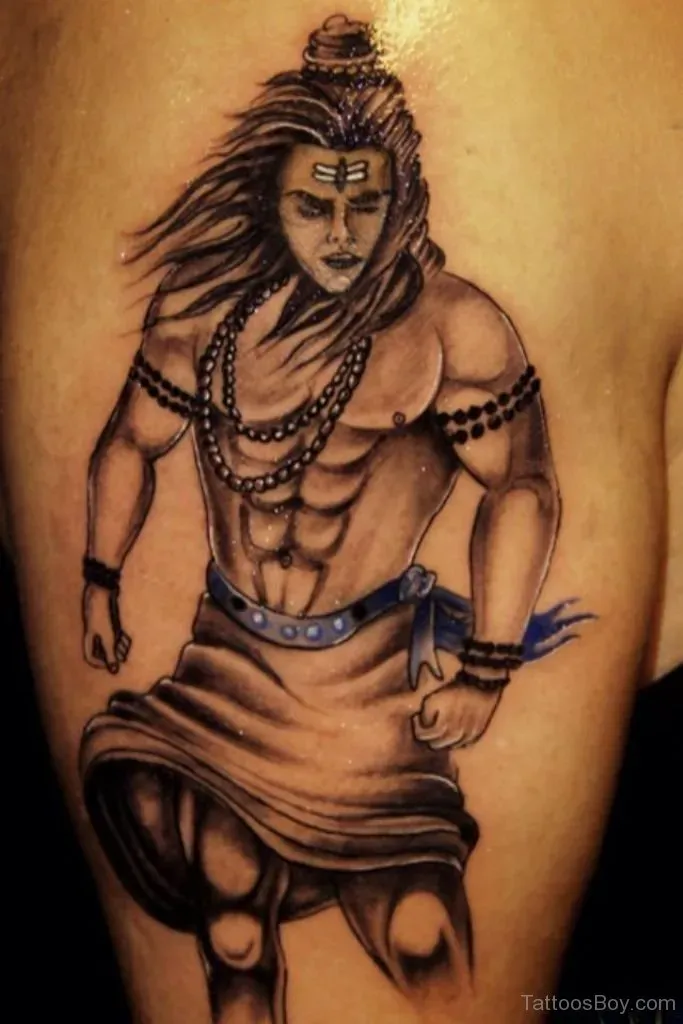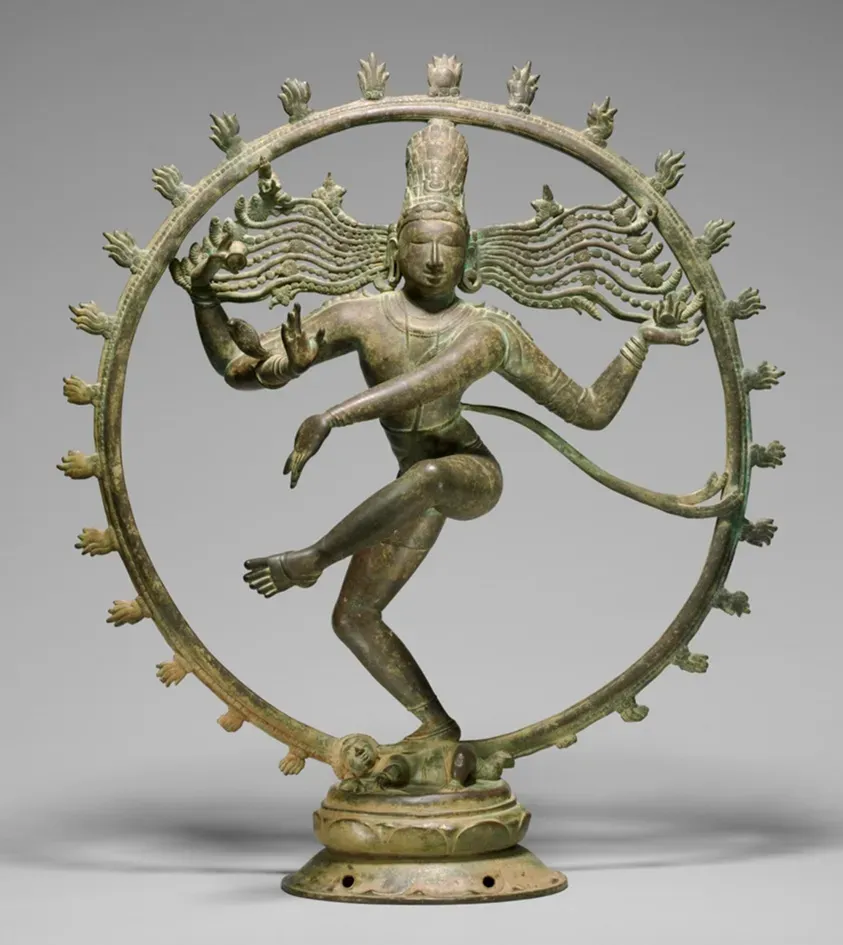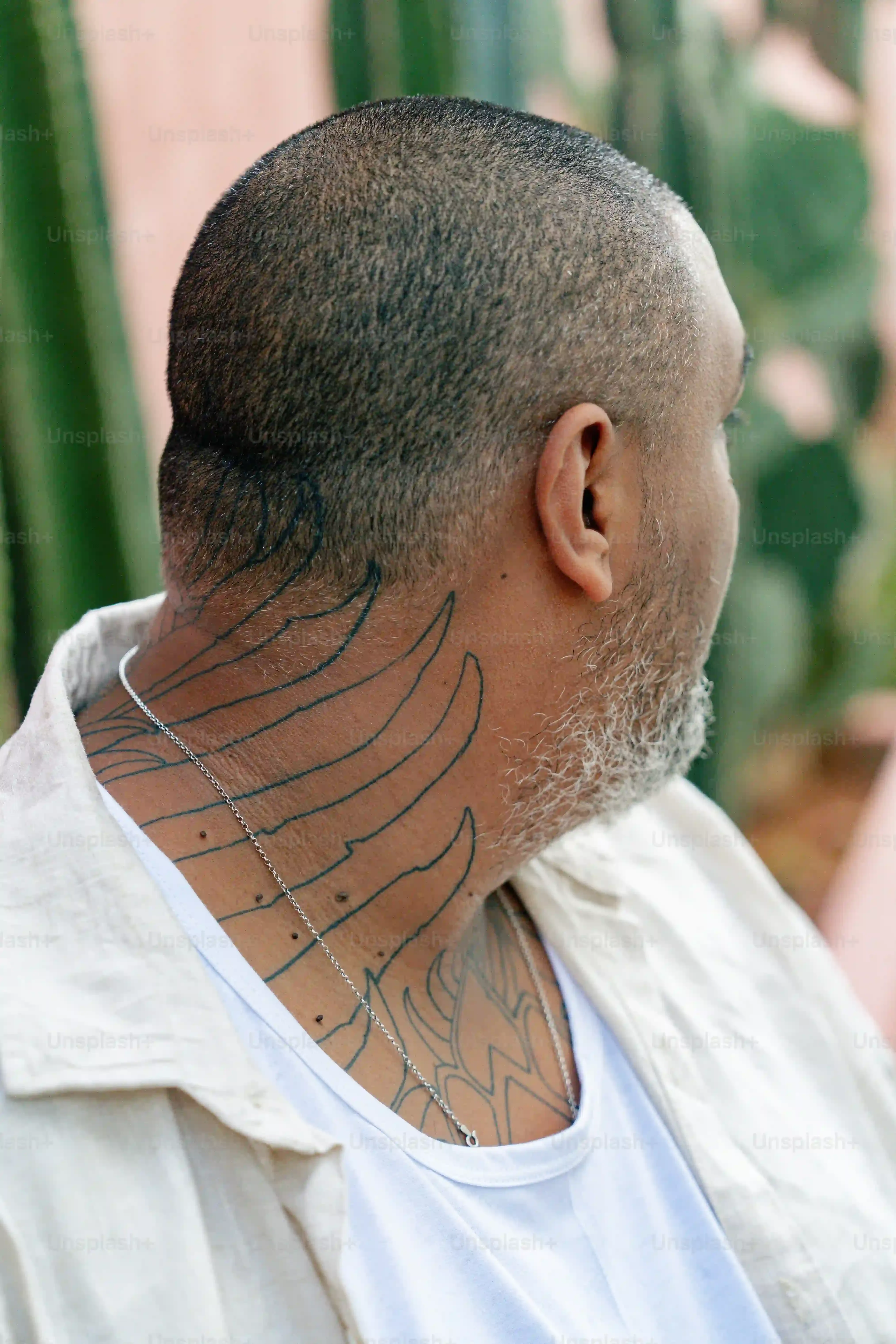Table of Contents
Walk into any tattoo studio these days, and you're likely to see portfolios featuring intricate ink of deities and spiritual symbols. Among the most powerful and frequently requested are lord shiva tattoo designs. These aren't just random images picked from a flash sheet; they carry significant weight and meaning for those who choose them. Lord Shiva, often depicted as the destroyer of evil and the transformer, is a central figure in Hindu cosmology – a complex deity embodying both fierce asceticism and cosmic dance, destruction and creation.
The Profound Meanings Woven into Lord Shiva Tattoo Designs
The Profound Meanings Woven into Lord Shiva Tattoo Designs
More Than Just Ink: The Weight of Shiva's Image
Choosing one of the many available lord shiva tattoo designs isn't like picking a generic tribal band or a cartoon character. This is heavy stuff. People aren't just getting a cool picture; they're etching a deity onto their skin, a figure who represents the entire cosmic cycle – creation, preservation, and destruction. When someone decides on a Shiva tattoo, they're often grappling with big ideas: mortality, transformation, letting go of ego, or seeking a connection to something far bigger than themselves.
Think about it. Shiva is depicted in so many forms: the serene meditator on Mount Kailash, the wild, ash-smeared Aghori, or the dynamic Nataraja, dancing the universe into existence and dissolution. Each pose, each symbol, tells a different story about power, detachment, and the raw, untamed forces of existence. Getting this inked is a declaration, a commitment to a path, or a reminder of principles you want to embody. It's not a decision made lightly, nor should it be treated as such by the artist or the wearer.
Decoding the Symbols: A Language on Your Skin
Every element in a lord shiva tattoo design carries layers of meaning, a visual language that speaks volumes without a single word. Take the third eye on his forehead; it represents wisdom, intuition, and the ability to see beyond the mundane world, into spiritual truth. It's the eye that burned Kama, the god of desire, to ashes, symbolizing victory over lust and worldly attachments. Then there's the crescent moon adorning his head – it signifies control over the mind and also represents the cyclical nature of time.
The snake coiled around his neck? That's Vasuki, the king of serpents, representing ego that has been subdued and kept under control. The ashes smeared on his body remind us of the impermanence of life and the ultimate reality of death, a pretty stark reminder inked permanently onto you. Even the simple Trishul (trident) he carries is powerful, representing the three fundamental aspects of consciousness: waking, dreaming, and deep sleep, or perhaps the trinity of Brahma, Vishnu, and Shiva himself.
- **The Third Eye (Trinetra):** Inner wisdom, intuition, destruction of ignorance/desire.
- **Crescent Moon (Chandra):** Control over the mind, cyclical time.
- **Snake (Vasuki):** Subdued ego, transcendence of fear.
- **Ashes (Bhasma):** Impermanence of life, detachment from the material world.
- **Trishul (Trident):** The divine trinity, control over past, present, future, or the three gunas (qualities).
- **Ganga River:** Purification, divine knowledge flowing from wisdom.
Iconic Lord Shiva Tattoo Designs: From Trishul to Tandav
Seeing Shiva: Popular Visuals in Ink
When people talk about iconic lord shiva tattoo designs, a few images immediately come to mind. One of the most striking is the Nataraja, Shiva as the cosmic dancer. He's usually depicted with multiple arms, one foot crushing a demon (symbolizing ignorance), surrounded by a ring of fire. This isn't just a cool dynamic pose; it represents the endless cycle of creation and destruction, the rhythm of the universe. Getting a Nataraja means you're pretty comfortable with chaos and change, or at least acknowledging it's part of the deal. Another common one is the meditating Shiva, often sitting on Mount Kailash, serene yet immensely powerful. This version speaks to detachment, inner peace, and the ascetic path. It’s the quiet before the storm, the stillness that holds everything.
Then you have the simpler, yet equally potent, symbols often incorporated into lord shiva tattoo designs. The Trishul, his trident, is a classic standalone piece or part of a larger design. It's sharp, direct, and loaded with meaning – those three points aren't just for show. They can represent the three worlds, the three Gunas (qualities of nature), or Shiva's power over past, present, and future. The Om symbol, often associated with Shiva as the primal sound of the universe, is another popular choice, sometimes integrated into a larger portrait or standing alone as a minimalist statement of cosmic unity. These symbols offer a way to connect with Shiva's energy without committing to a full figurative piece.
Beyond the Basics: Exploring Other Iconic Elements
It's not just about the man himself; the things around Shiva are just as significant in lord shiva tattoo designs. Nandi, his bull vehicle, is a symbol of dharma, strength, and loyalty. A Nandi tattoo can represent devotion and righteous action. The Damaru, the small drum he holds, creates the primordial sounds of creation and the rhythm of the Tandava dance. Inking a Damaru can symbolize the creative force and the power of sound. Sometimes you see the crescent moon featured prominently, maybe with a single drop of the Ganga river flowing from his matted hair – representing purity and the flow of divine knowledge.
Some folks gravitate towards depictions of the Aghori form, the ascetic living in cremation grounds, smeared with ashes. This is a powerful, often confronting image that represents Shiva's transcendence of societal norms and fear, embracing the ultimate reality of death. It's definitely not for the faint of heart. Choosing one of these less conventional depictions in your lord shiva tattoo designs is a strong statement about your understanding of Shiva's more intense, transformative aspects. It says you're willing to look at the raw, uncomfortable truths of existence, not just the pleasant ones.
Considering one of these iconic looks? Ask yourself:
- Does the image of Nataraja resonate with your view of life's constant change?
- Are you drawn to the peace and detachment of the meditating Shiva?
- Do the simple, potent symbols like the Trishul or Om speak loudest to you?
- Are you ready for the intensity and symbolism of the Aghori form?
Placement and Style: Making Your Shiva Tattoo Personal
Placement and Style: Making Your Shiva Tattoo Personal
Finding the Right Canvas: Where to Put Your Shiva Ink
so you've wrestled with the profound symbolism and maybe even narrowed down which form of Shiva resonates most with you. Now comes the practical part: where on your body is this powerful imagery going to live? The placement of your lord shiva tattoo designs isn't just about aesthetics; it can also influence the size, detail, and even the visibility of the piece. A large, detailed Nataraja might command a back or chest piece, allowing the artist room to capture the dynamic movement and intricate details like the ring of fire and multiple arms. A smaller, more minimalist Trishul or Om symbol could work well on a wrist, ankle, or the back of the neck – places you might see daily or keep more private. Some folks choose the forearm or bicep for a meditating Shiva, making it visible yet still allowing for clothing coverage when needed. Think about how often you want to see it, how much space the design needs, and whether you're comfortable with it being easily seen.
Style Matters: Choosing Your Artistic Approach
Beyond just the image of Shiva, the artistic style makes a massive difference in how your lord shiva tattoo designs look and feel. Are you drawn to the bold lines and solid colors of traditional American tattooing? Or maybe the smooth shading and realistic detail of black and grey realism? Perhaps the vibrant hues and intricate patterns of neo-traditional or illustrative styles? Each approach brings a different energy to the depiction of Shiva. A realistic portrait might capture the intensity in his eyes, while a traditional piece could give him a more iconic, graphic punch. Some artists specialize in dotwork or blackwork, creating striking, textured images through patterns of dots or solid black areas – a style that can lend itself well to the cosmic or ascetic aspects of Shiva. Don't just find an artist who can draw Shiva; find one whose overall style aligns with the feeling you want your tattoo to convey.
When considering placement and style for your Shiva tattoo, ask yourself:
- How visible do I want this tattoo to be on a daily basis?
- Does the chosen body part offer enough space for the detail in my preferred design?
- Which artistic style best captures the essence of Shiva that I want to represent?
- Have I looked at portfolios of artists specializing in different styles to see what resonates?
Before You Ink: Key Considerations for Your Lord Shiva Tattoo
Before You Ink: Key Considerations for Your Lord Shiva Tattoo
The Practicalities and the Commitment
Alright, so you've poured over the symbolism, maybe even picked out a few potential lord shiva tattoo designs that speak to your soul. That's fantastic, but hold your horses for just a second. Getting a tattoo, especially one as meaningful as a Shiva piece, isn't just a spontaneous trip to the parlor after a few too many. This is permanent ink, a commitment to carrying this powerful image on your body for life. You need to think about the artist – have they done large, intricate pieces before? Do they understand the specific iconography you're interested in? Are their hygiene practices top-notch? This isn't the time to hunt for the cheapest deal on Craigslist. You're investing in art, yes, but also in your health and the longevity of a significant personal statement. Consider the size and placement carefully; a small, poorly rendered Shiva won't do justice to the deity, and a massive piece in a visible spot means you'll be explaining it for decades. Think about healing time, potential touch-ups down the line, and yes, even how it might look as your body changes over the years. This isn't a temporary sticker; it's a life choice.
Before you book that appointment, seriously ask yourself these things:
- Have I researched artists specializing in religious or detailed work?
- Does the artist's portfolio show clean lines and good shading?
- Am I prepared for the potential pain and the healing process?
- Is the placement I've chosen practical for my lifestyle and future?
- Do I fully understand the specific symbolism in the lord shiva tattoo design I want?
More Than Just Ink: The Enduring Power of Your Shiva Tattoo
So, you've navigated the myriad forms, considered the deep symbolism, and perhaps even pictured the placement. Getting a lord shiva tattoo isn't like picking a random piece of flash art; it's opting to carry a potent symbol on your skin. It’s a commitment to a complex deity representing forces that are, frankly, often uncomfortable – destruction, asceticism, the wild unknown. This ink serves as a constant reminder of the impermanence of things, the necessity of transformation, and perhaps, the quiet strength found in letting go. Choose wisely, find an artist who respects the depth of the subject, and understand that this isn't just decoration; it's a conversation piece etched into your very being.